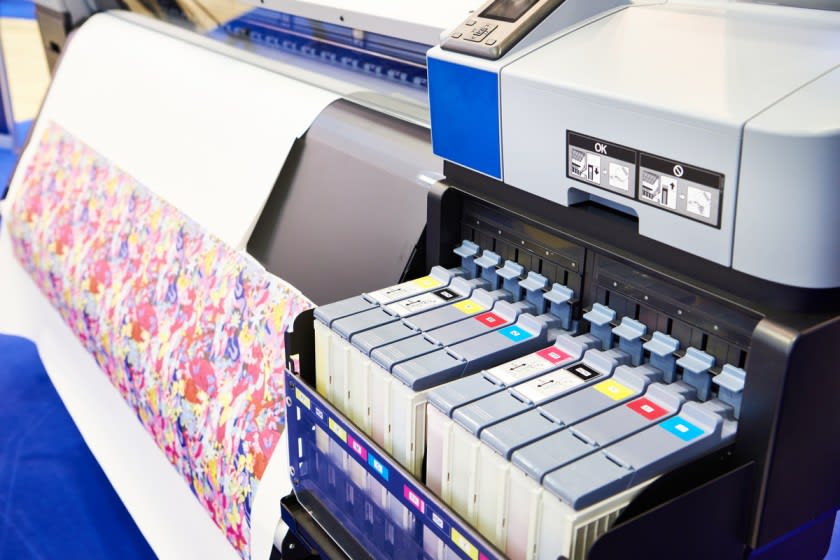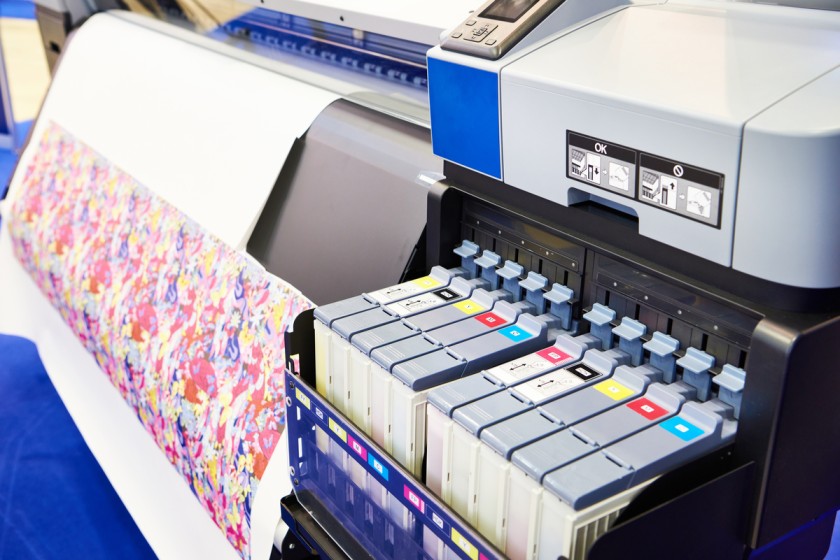The World of Growing Digital Printing Industry: Its Pros and Cons



The printing business has evolved dramatically since the inception of the printing press. Today, the colourful new digital printing is propelling the printing industry into the digital age. Entrepreneurs may obtain faster printing timelines and more vivid, brilliant prints with digital technology at a lesser cost than traditional laser printing. In the fashion industry, digital printing on fabric is a new way to get close to high-quality and unique designs.
What is digital printing?
Digital printing is the process of printing straight from a virtual medium to a surface. Digital prints are done via desktop as the designs are made digitally and then printed on the fabric by employing huge or high-resolution laser jet printers in industrial publishing.
What distinguishes the digital printing process from the offset printing technique?
Offset printing is a printing technique in which the inked image is transferred from a surface to a rubber blanket and then to the surface that is to be printed. In this process, the ink rollers transfer ink to the areas where the image is to be printed, while a water roller applies a water-based film to the areas where the images are not meant to be printed. Films and plates used in offset printers can be expensive. Their visuals and graphics are neat and fine, with a high-quality design on the fabric. Offset printing also provides manufacturers with a wide assortment of fabric options such as polyesters, silks and much more.
- Digital printing is an ink-jet-based method of printing colourants onto fabric. It is also known as Direct to Garment printing. It can be used for printing on organic fabrics like wool, cotton, and linen. The majority of today's digital presses are ink-based and print on cloth with electricity. Thanks to technological advancements, digital machines can now print multiple sides of the clothes identically, saving significant time. Designers can paint on the fabric for small tasks, such as samples demanded by the client. It helps designers show their talent, and their designer's print product will turn out as an achievement.
Pros and cons of digital printing on fabric

Pros
Professionals frequently prefer digital printing on fabric because it offers several pros.
- Correct alignment
Seeing a sample of your design before producing units worth hundreds of dollars is critical, and it might be the distinction between having great designs and one that doesn’t print well despite its style, costing your company significantly!
The advantage of digital printing is that you can examine the alignment of the print before printing. The draft, which will most likely be in the form of printed fabric, will allow you to examine the final version and discover any design changes, mistakes, or misjudgments.
You may rest assured that your printing budget will not fritter away. Digital printing on fabric also produces identical units in bulk.
- Efficiency
Modern digital printing is incredibly fast.
Digital printers are perfect for producing short-run jobs quicker than other printing methods. By employing 3D printers, professionals will save time setting up and printing presses, and their orders will arrive days, if not months, sooner than expected.
When it comes to printing specific fabrics, many companies typically face tight deadlines not only for graphics but also for printing designs on the fabric. It can be difficult to manage too many tasks at a time when the printing processes are slow.
In contrast to standard printing technologies like graphic printing, digital printing allows for a faster turnaround and less disruption. Any reputable print service provider needs to complete a task in a matter of days, while many complete it in as little as 24 hours. However, it is preferable to double-check the processing cycle with the print provider.
- Best-quality results
Not surprisingly, when it comes to quality, nothing beats digital printing.
In any printing procedure, product quality is crucial. Digital printing ensures a high level of quality, with whole variations and shades. Many designers prefer digital press because of its excellent colour registration. The colours come clean and lively, revealing all design possibilities. Designers can add to the design by printing white ink for shiny finishes or an imprinted feel. Graphic images are invariably faultless, with no alignment or registration difficulties and bright colours.
- Economical
Digital printing can lead to significant savings.
Because no print sheets or colour pairing are required, planning time can be reduced. Digital printing is an economical choice due to the absence of any huge setups required for printing. The overall system functions properly while saving both time and money. As a result, the value of digital printing is typically far lower than the cost of offset printing. Digital printing is easier to set up, which reduces costs. Because digital printing does not require preparation, there is a significant cost saving, especially for modest quantities.
- Ecologically friendly

A computerised print is an excellent choice for those who care about the environment.
Because digital printing uses less ink, it is environmentally friendly. Toners only infuse into the design areas, which averts the possibilities of imperfect designs. Therefore, there is often less trash and faster clean-up procedures. Digital printers have also been shown to produce fewer CO2 emissions elsewhere. Many printing presses even use polymer-based inks, which do not emit dangerous emissions into the atmosphere. Instead, they utilise lower resources and emit fewer greenhouse gases, especially compared to preservative ink or ultraviolet inks.
- Advancement
Because digital printing is constantly growing, it is gaining favour.
The IT industry has come a long way from its peak in the 1990s. It is projected that in the next 30 years, you will have more accessible and efficient technology for professional printing, but for the time being, you will have to make do with computerised printers.
- More options
One of the most significant benefits of digital printing is that polymeric materials do not need to be kept in a secure position. As a result, further personalisation in the design of various types of fabrics is possible. Digital printers are also capable of printing on thick objects. It allows for projects that other print techniques cannot handle. To summarise, you can digitally print on almost any surface.
- Colours that pop
Digital machines may now achieve the same wide colour as conventional imprint press because of technological advancements. Because it uses the same colours, digital prints are barely distinguishable from traditional printing. It accomplishes all different colours which come with a similar alignment on the fabric or paper.
Cons
There are a few drawbacks to digital printing technology that reduce its usefulness.
- Restricted colour pairing ability
Most toner-based digital printing presses cannot print a Pantone Matching System colour. The digital printing press has to simulate the colour using CMYK values of the colour chosen. Therefore, one cannot get a variety of colours from digital printing. It is attributable to the fact that each thermal printer uses different inks, raster-based processes, and ink cartridges, resulting in minor colour changes when published. Also, the colour white cannot be reproduced within the print.
Although high-quality printing is possible, digital printing presses will not reproduce shiny designs or vibrant hues in the fabric. If designers want something a little more appealing in clothing, this is too far from being a good option.
- Limited fabric choices
In the case of the digital printing method, the variety of fabrics that can be used is few. It can't be used for fabrics like polyester as the water-based inks are repelled by the fabric. Therefore any fabric containing similar plastic fabric won't hold the colour.
- Colour Deteriorates
The print produced from a digital printing press may not be durable. Digital prints can deteriorate as you wash clothes. The situation may get worse with hot water.
- Short print runs
The digital press is not a viable alternative for pricing if your publishing job needs more than 2,600 copies. A limited amount of prints can be done using this method. Due to fixed prices, bulk printing can't offer cost reduction.
Conclusion
The modern digital printing process is not only helpful for paper media, but it has also improved the quality and uniqueness of designs in the fashion industry. Fashinza is one of the leading B2B platforms that provide digital printing on fabric for high-quality and the best designer clothes. Many entrepreneurs prefer different fabric designs that have wide appeal and market demand. Technological advancements have rectified most, if not all, all drawbacks of the modern printing process. It helps to get appropriate designs at low costs.



















